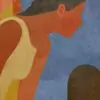In our ongoing celebration of burgeoning talent, we spotlight Wushuang Tong, an emerging multidisciplinary artist from China. At the core of Tong’s artistic practice lies the concept of “Aesthetic Synesthesia“—a fusion of various domains that transcends traditional boundaries. Tong’s approach, which amalgamates elements from music and literature, manifests through numerous mediums. Utilizing oil paint, canvas, ceramics, and wood, her tools of choice act as ample conduits for her expansive creativity.
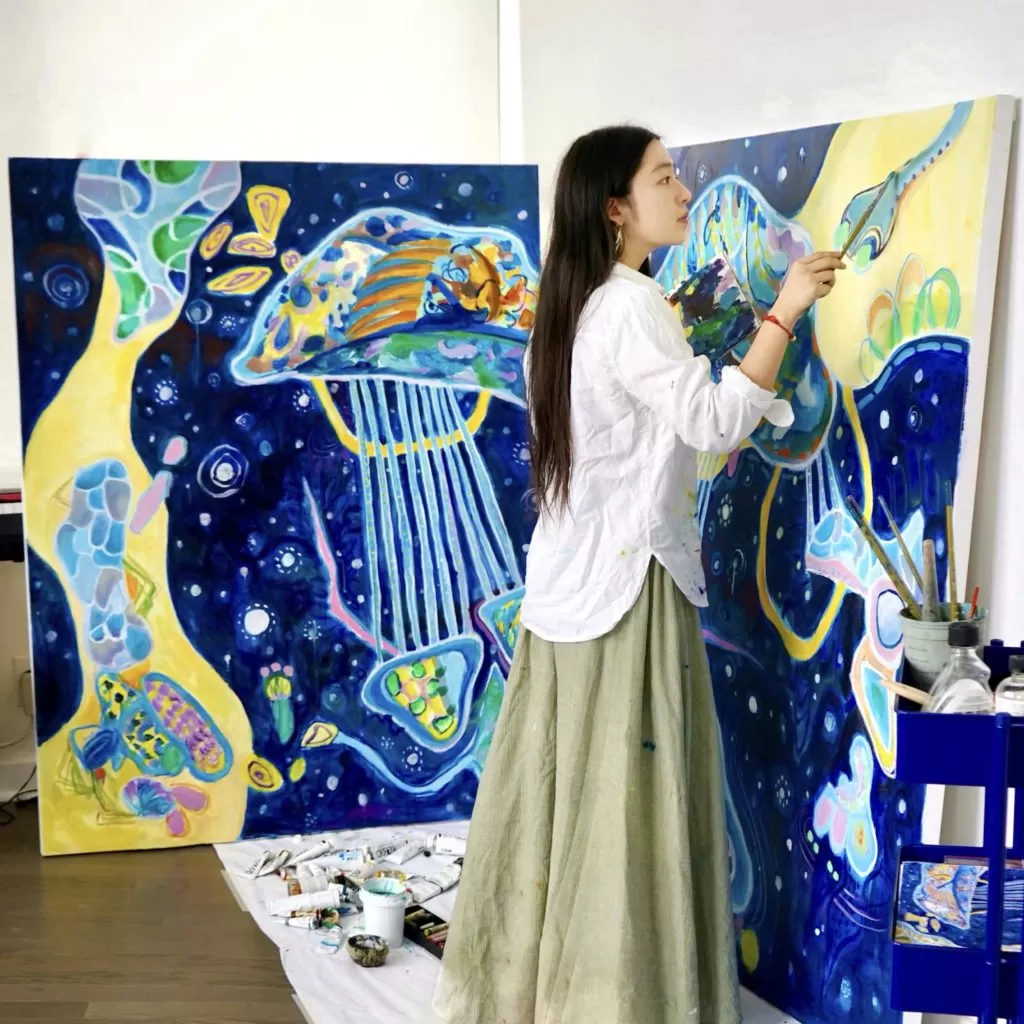
In music, synesthesia is the connection between melody and atmosphere that it triggers. In literature, synesthesia is usually a rhetorical method referring to symbolize an abstract description visually.
Wushuang Tong
In Tong’s paintings and mixed-media works, a symphony of synergy comes to life in the form of exuberant abstraction. Here, a rhythmic riot of shapes and colours unfolds in an intriguing dance of form and formlessness. Each segment of her work tells a story, an idea, or perhaps a memory, all encapsulated in vivid colour and line. Tong’s palette is an eclectic mix, where muted pastels engage in a visual discourse with bold, assertive hues. This interplay creates compositions that are as harmonious as they are discordant, reflecting the complexity of Tong’s emotions and perceptions through Synesthesia.
Tong’s educational background is as diverse as her art. She received a BFA from the School of the Art Institute of Chicago, an MFA from the School of Visual Arts, and a BA in Literature from Wuhan University in Wuhan, China. Her compelling works have earned her recognition as one of Saatchi Art’s Rising Stars of 2019. Additionally, Tong has successfully exhibited her work in New York, Chicago, Atlanta, and China.
In this interview, we delve deeper into the artist’s world. We will explore the woman behind the art, her creative process, inspirations, and more.
Q: First things first, why do you do what you do?
Wushuang Tong: There is always a creative impulse in my heart, and it makes me feel I have to. I adopt art as a medium and catharsis of self-expression, but at the same time, it obliges me not to keep myself apart. Of course, I could survive without art, but what for? I have chosen the fate of the artist which is vulnerable but obstinate. When I’m creating, I gain enthusiasm to discover the abundance of this world that I can’t tear away from. That is why I value art: a commitment forges myself to observe different communities on the same level as them, and allows me to still live as I am.
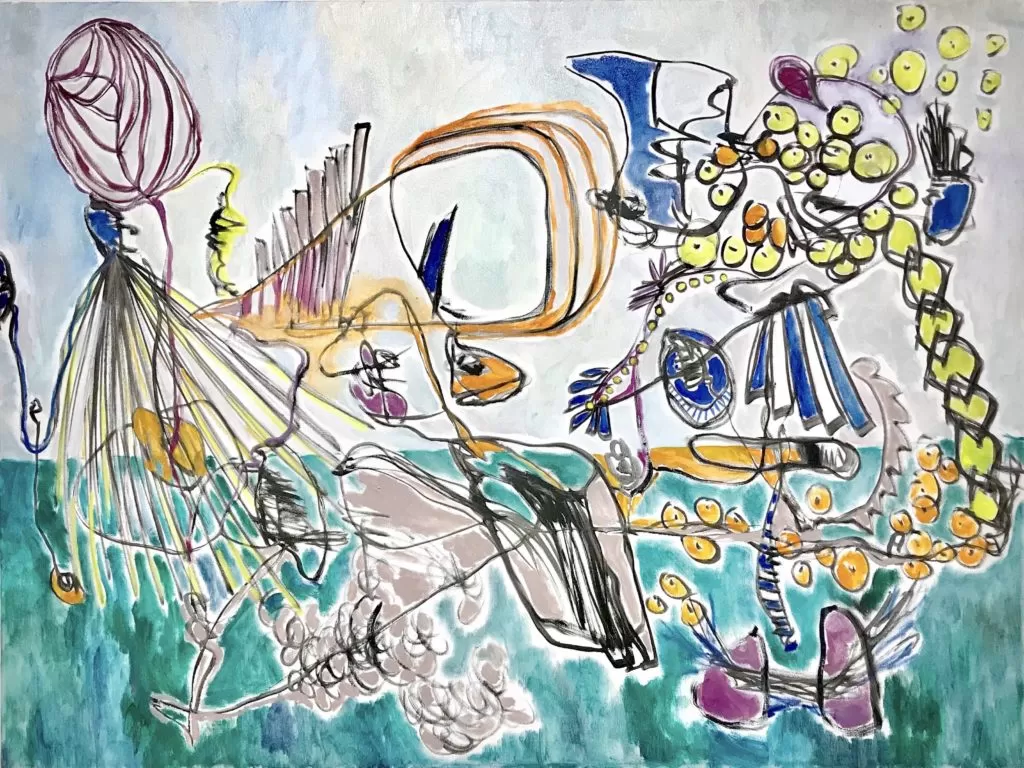
Q: What is your inspiration?
Wushuang Tong: I guess one of the best things about being an artist is that I can transform everything in my daily life into art. Every common joy and suffering have the potential to be the inspiration, so I don’t feel guilty when I’m not working…ha ha. Usually, nature, especially plants and creatures, is more likely to be the direct inspiration for my artwork, coming to lines or patterns. But literature plays the spiritual core in most of my pieces.
Q: What is your creative process when you’re creating?
Wushuang Tong: Sometimes I bet my work on my aesthetic instinct and contingency. When I begin to create, I have a general idea of what I’m trying to achieve, and then I let the work change drastically by using mark-making and mixture of colors, and finally reveal itself. But I gradually have found out that the randomness causes both surprises and problems. The main thing I’d like to do now is to slow down and revise my sketch. I want to make shapes that are floating, gathering, dissolving, or in any process of moving.
Q: Which is your preferred surface for working on?
Wushuang Tong: I like primer canvas, although it seems I don’t have much choice for painting surface. Without thinking of function, I prefer clay because it’s more touchable, thus connecting closer to my motion of fingers.
Q: What would you say is an integral part to the work of an Artist?
Wushuang Tong: Be honest to their work. I will never say “be honest” without any delimitation. That’s too hard. But at least be honest to themselves and their art. Some artists lie about the motives of their creation – they may show no interest in some topics until they figure out the topics attract people’s attention. Some artists act as weirdos because they are required to be “distinct” from “ordinary people”. Anyway, many artists pretend or have to pretend because of plenty of reasons. That could be a survival strategy. I won’t judge it. But as long as they know what their works really are and try to get rid of the affectation, they still own their art.
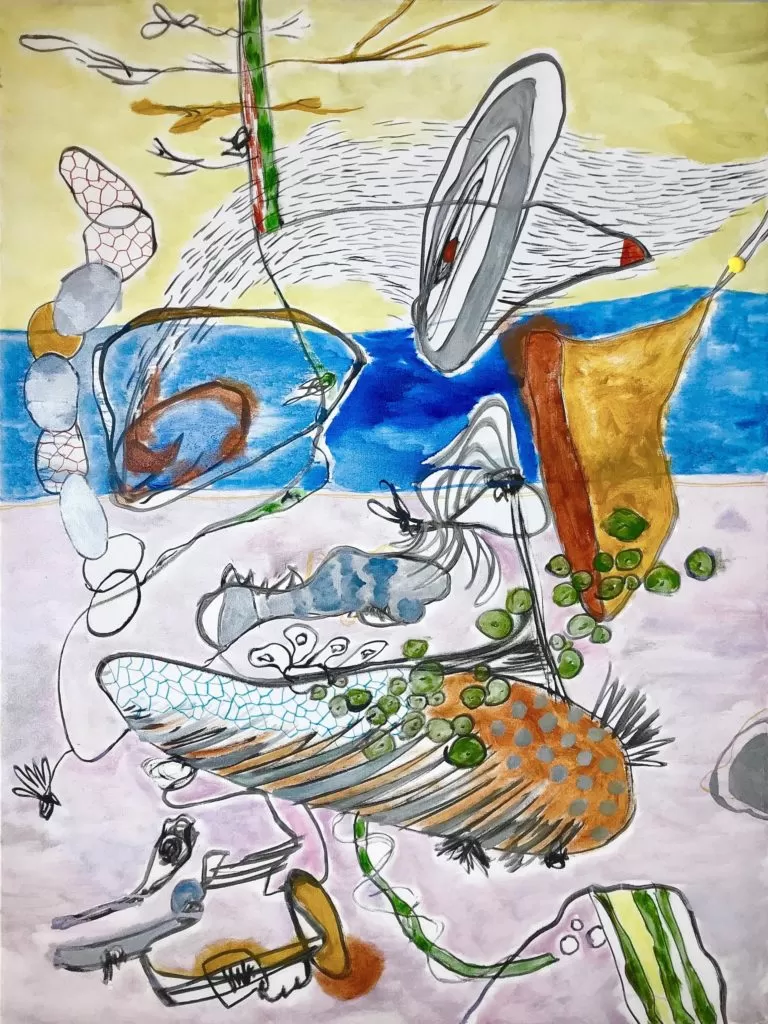
Q: What artist inspires you the most?
Wushuang Tong: I think it is unhealthy to be strongly inspired by one person. I prefer to say the experiences and personalities of many artists encourage me to continue my art rather than to inspire my creativity.
Q: What is the reason behind your use of literature and music in your works?
Wushuang Tong: I have been immersing in literature and music for many years: I earn a BA degree in literature; I have been played cello since I was seven. So I’m very used to be an artist, a writer, and a cellist at the same time. During the practice, I have found there is one commonality throughout these three disciplines. I named it “Aesthetic Synesthesia.” In literature, synesthesia is usually a rhetorical method referring to symbolize an abstract description visually. In music, synesthesia is the connection between melody and atmosphere that it triggers. I believe these sorts of synesthesia are also equally applicable in art.
My creative process can be likened to an author is writing a lyrical poem or a composer is improvising. On the one hand, I write poems for my artworks. Rather than describing my work in specific sentences, I prefer to write a poem because the poem is similar to art — an aesthetically suggestive method that only provides a general direction of sense. It fills with metaphors that allow multiple imaginative possibilities. On the other hand, the way I deal with the composition in my artwork is like the method that a musician is composing.
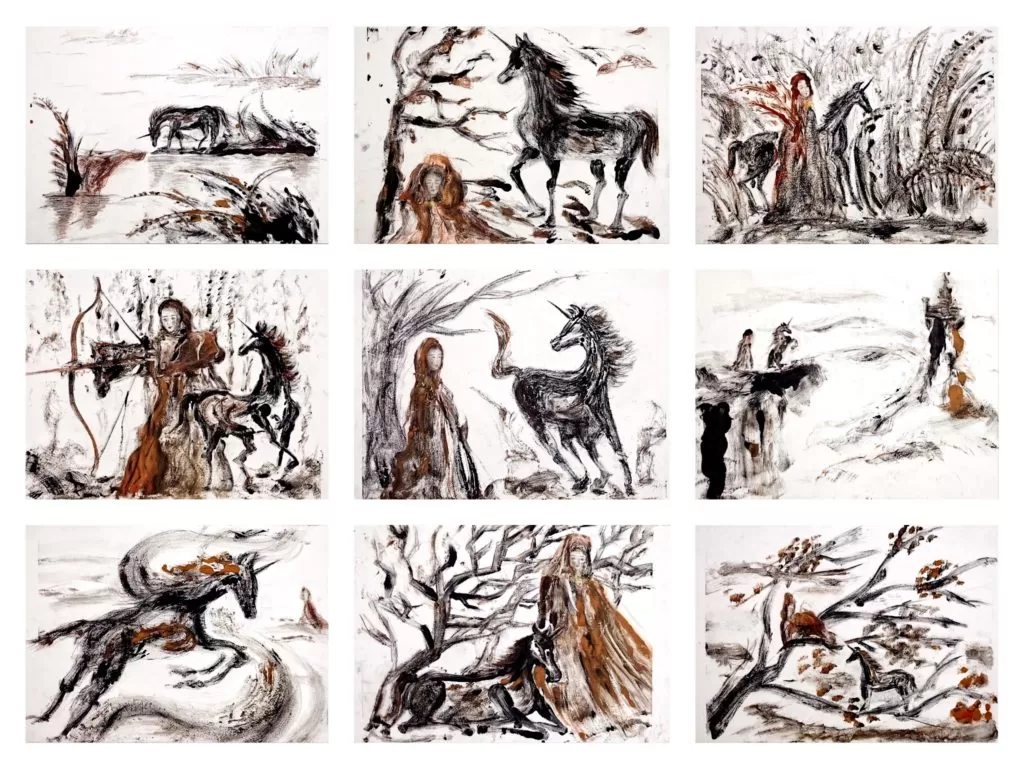
In the content, I think about in a movement, how the tone and rhythm can be harmonious? Or in the concerto, how the orchestra cooperates with the solo? For me, the tone in art is the color; the rhythm is the line; the orchestra is the background; the solo is the main body of the work. Therefore, literature and music always infiltrate in my art.
Q: How do you know when a piece is finished?
Wushuang Tong: I know a piece is finished when it reaches the state I expected. Maybe it’s different from what I visualized, but a finished piece has an isolated characteristic. It makes me feel it’s no longer a part of me, and it has become itself.
Q: What is your favourite piece from your collection?
Wushuang Tong: The next piece.

Q: How did you feel when you did your first solo exhibition?
Wushuang Tong: I haven’t done a solo exhibition yet. Although once a gallery offered to do, I feel I need more time to polish my art. A solo exhibition is a milestone for an artist. I want to be more than well-prepared.
Q: What is the most rewarding thing for you about being a part of the Art Industry?
Wushuang Tong: The most rewarding thing is that I live up to my talent. It was a hard decision when I decided to be a part of art industry since I was more familiar with literature and music, those disciplines that have been accompanying me for many years and I have proved myself can be good at. I appreciate I dare to learn a brand new area. I don’t waste my talent in art.
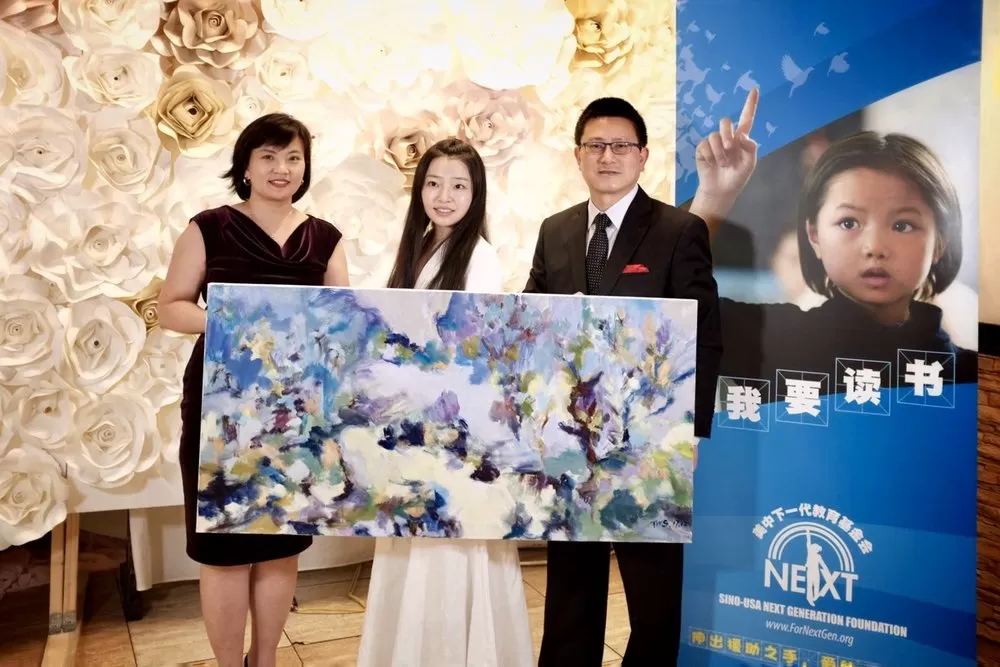
Q: Is there anything that worries you about how social media is affecting the promotion of artists?
Wushuang Tong: I don’t worry about social media will affect my promotion. I benefit from it. But I do realize that social media affects many artists, in a good way and a bad way. It can build a broader network for artists. Some collectors came to me because they saw my post.
Meanwhile, it can cause distractions. For example, if you post a painting on Instagram and get 100 likes yesterday, and then you post another painting and get 20 likes today, you may consider why people prefer the former painting. In that case, many artists could be highly affected. They may concentrate more or less on their followers’ feedback rather than the real artistic goal they want to achieve.
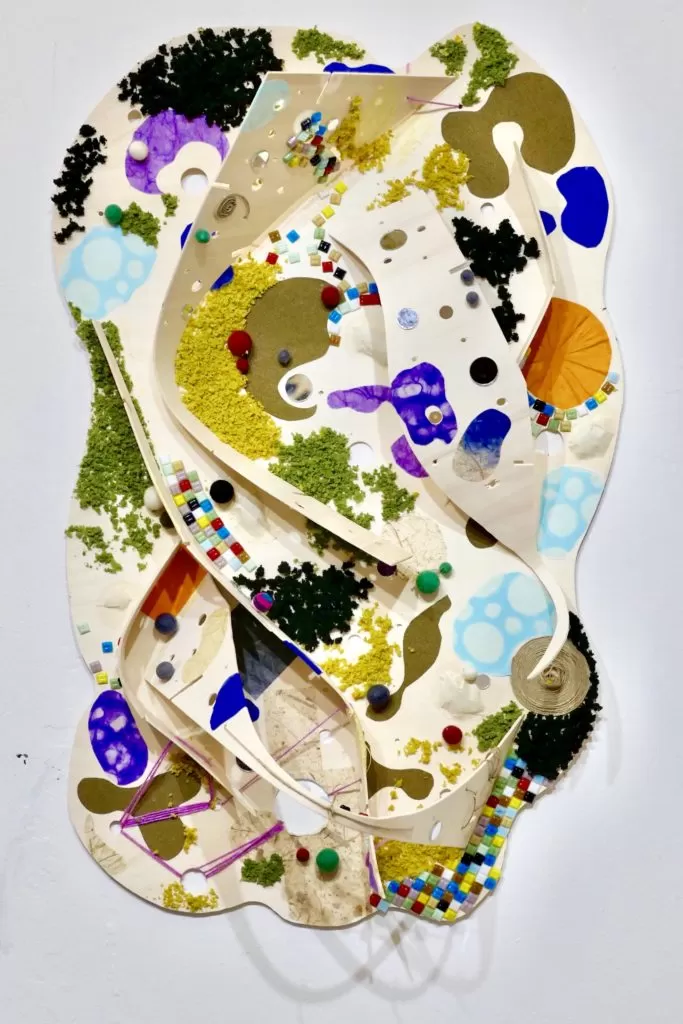
Q: In your opinion, do you have any advice for artists on how to manage their social media image? Or does it even need managing?
Wushuang Tong: Every ambitious artist needs to manage social media. When I was in art school, my professor said, “The time that artists just need to wait in their studio for collectors and curators to knock their doors has passed. Artists have to go out.” Managing social media is also a way to record the process. I suggest don’t be too serious or too casual, and only post images with high-quality.

Q: Are there any places where you feel Art and Technology really shouldn’t overlap?
Wushuang Tong: No. We live in this era. Some people may think this is an insane technologic era because they see the problems technology has caused. But I believe artists can forge the art in times of differentiation to rebuild the faith and to fight against the instinct of unbalance in every era.
This was emerging artist Wushuang Tong. To stay updated with her work and exhibitions, head over to her website at the link below.
https://www.instagram.com/wushuangtongarts/
©2019 Wushuang Tong



